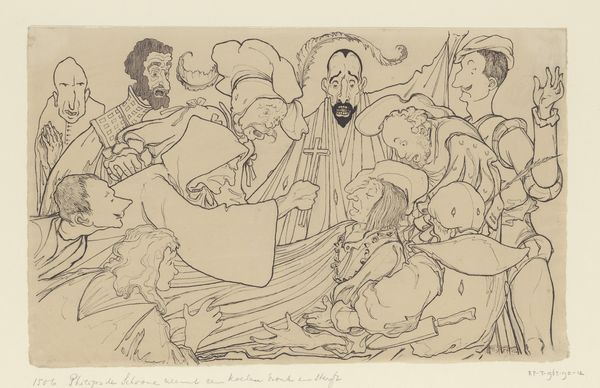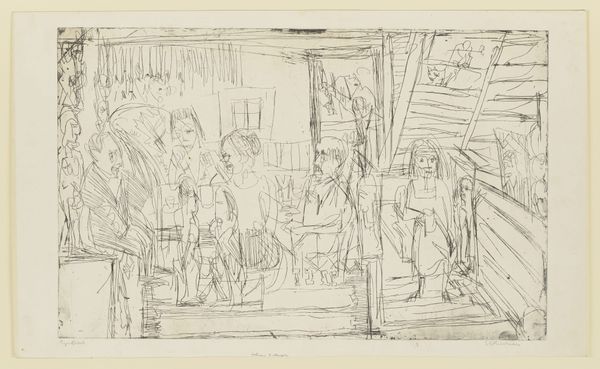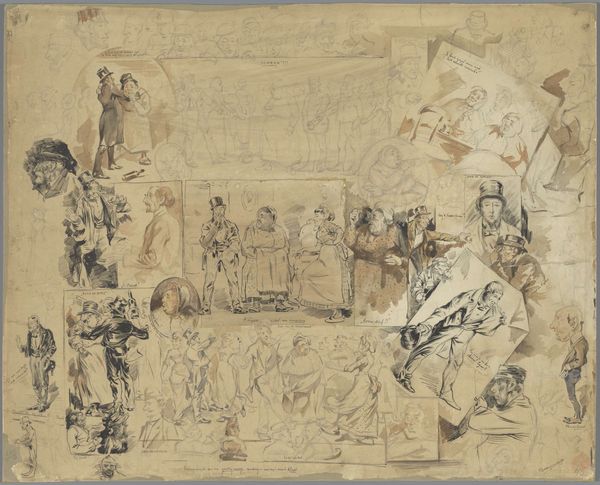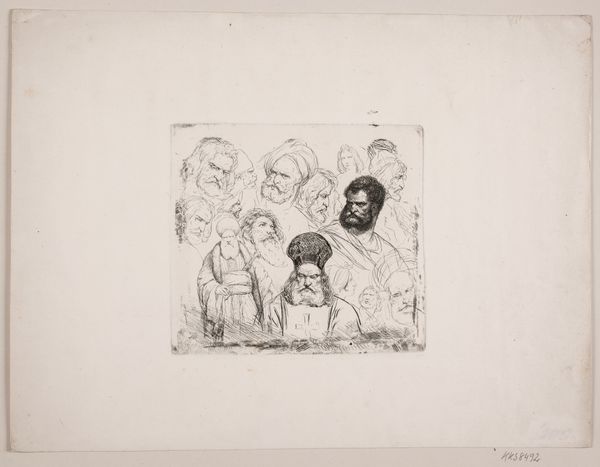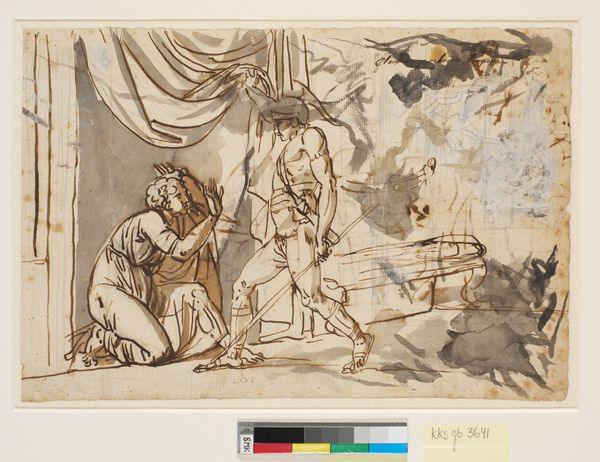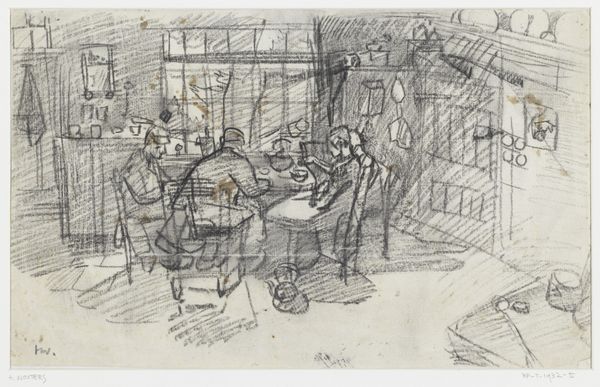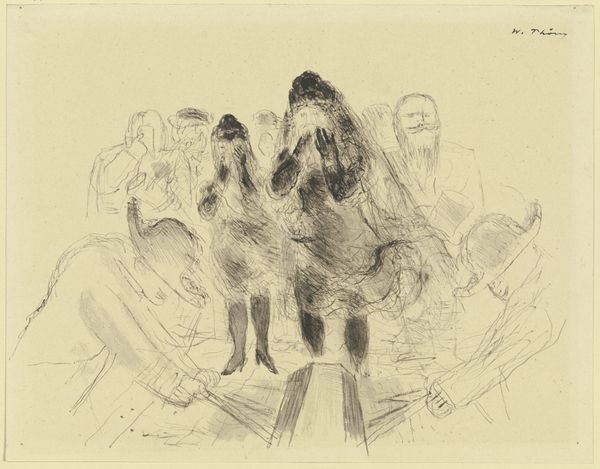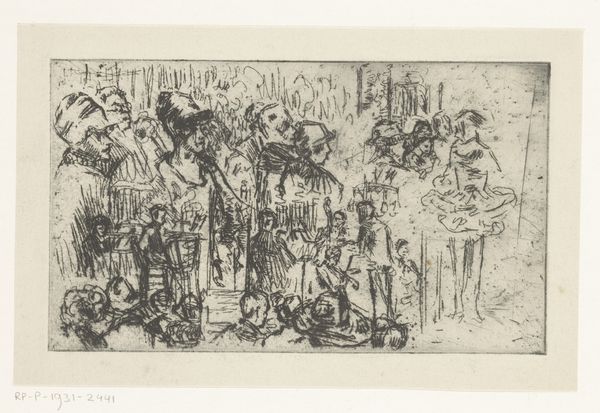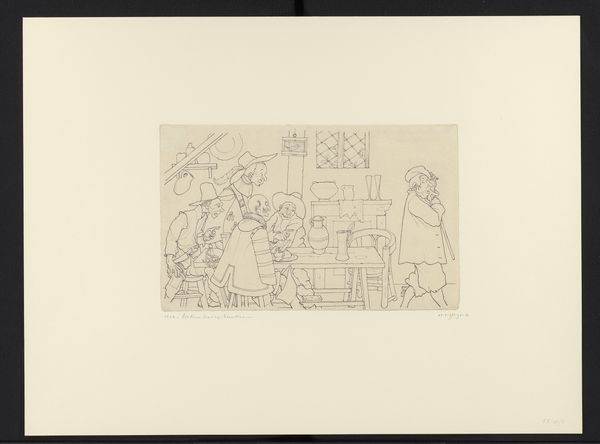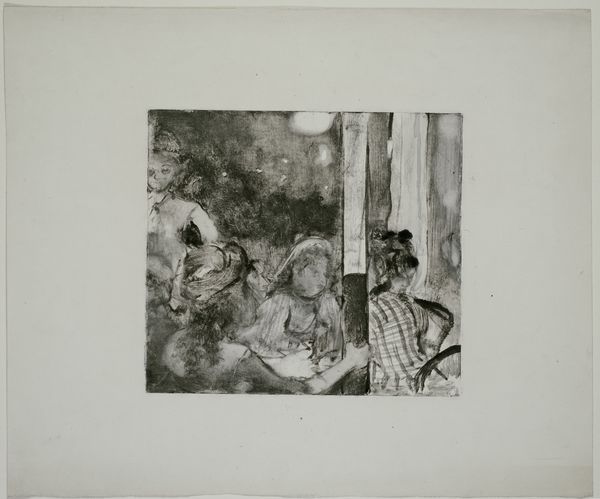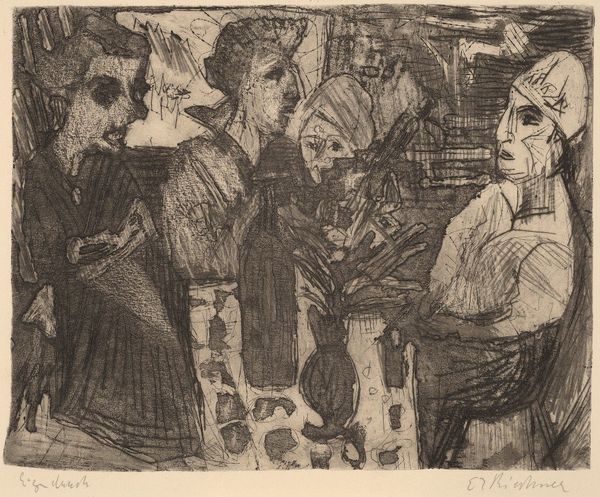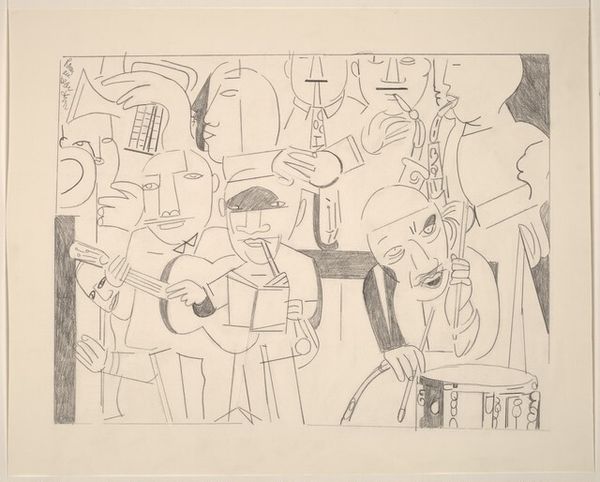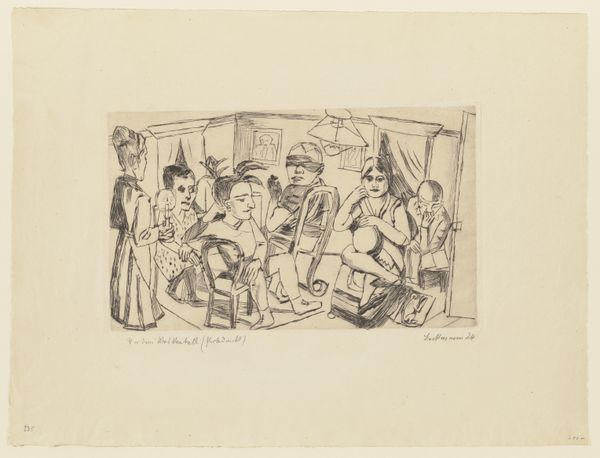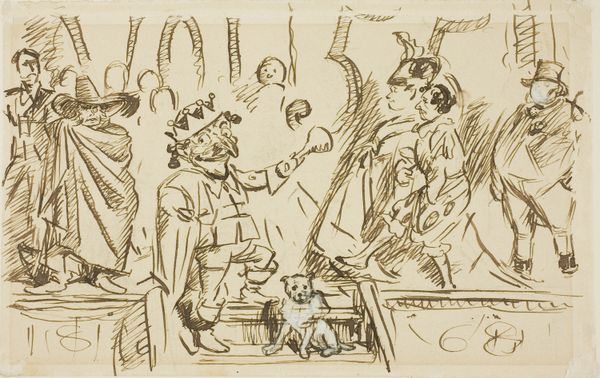
Station of the Cross No. 7: "Jesus Falls the Second Time" c. 1936
0:00
0:00
drawing, watercolor
#
drawing
#
figuration
#
watercolor
#
history-painting
#
watercolor
Dimensions: overall: 43.2 x 45.7 cm (17 x 18 in.) Original IAD Object: Approximately 30 x 50 in.
Copyright: National Gallery of Art: CC0 1.0
Curator: Up next, we have "Station of the Cross No. 7: 'Jesus Falls the Second Time'," a watercolor drawing dating back to around 1936, created by Beulah Bradleigh. Editor: Wow, it hits you, doesn’t it? It’s all somber muted tones, kind of oppressive, even—but the figures, though stiff, convey so much despair and exhaustion. There's something really poignant about that rawness. Curator: It’s interesting you say that, because the piece utilizes a flattened perspective— almost like a tapestry. Bradleigh separates the characters, the Roman soldiers on one side observing the torment that they have forced on the other side; on the other, you can see Christ, bearing the cross with exhaustion—the figures separated both by design and, perhaps, thematically. Editor: Yes, absolutely—it does give it a deliberate almost dream-like feeling. And the way she uses color, almost washing everything in browns and grays—except for small touches, a bit of red here and there that draws attention. There's real intent there in conveying specific emotions. What else strikes you about it formally? Curator: I'm intrigued by the composition. It's bisected, as you said, one side chaotic and full of struggle, the other still and observant behind a wall or a barrier, and there's a starkness to it—almost an echo of early Renaissance frescoes, but imbued with much more direct human emotion. Editor: I feel the muted color palette creates this weight of collective sorrow, as if the earth itself is in mourning, and you become acutely aware of all the heavy symbolism. The burden of it all. Curator: It reminds us that these stories—whether one believes in them or not—they echo through the centuries as reflections of human suffering and resilience. Editor: It feels quite present in that moment. Curator: Certainly—so thanks for joining us, as we explored this particular vision. It's a work that speaks of burdens and witness, done by a rare and visionary talent. Editor: A sobering meditation on human suffering. Something to carry with you, certainly.
Comments
No comments
Be the first to comment and join the conversation on the ultimate creative platform.
